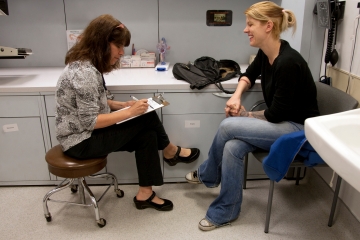Public funding improves women's access to birth control
Women who visit a health care provider that receives state Medicaid family planning funds are almost twice as likely to use highly effective forms of birth control, like IUDs and implants, than women who visit similar providers that do not receive those funds, according to a new study conducted by UCSF Bixby Center researchers in partnership with the Planned Parenthood Federation of America.

The study, published in the American Journal of Public Health, was conducted in 40 Planned Parenthood health centers to determine whether public funding for contraception was associated with the use of long-acting reversible contraceptives (LARCs). LARCs, including IUDs and implants, have been demonstrated to reduce unintended pregnancies. The study ensured women had access to information about the full range of birth control options, including LARCs, so they could make the best decision for themselves.
The study found that women who visited health centers that receive state Medicaid family planning funds were twice as likely to use an IUD or implant, compared with women who visited providers that did not have this funding. LARC initiation was also higher among participants with public health insurance, compared to those who were uninsured or had private insurance. This demonstrates that public funding reduces the high upfront costs of some methods, which is critical to increase access to birth control, especially for low-income and uninsured women who wish to use these methods.
“More than one in three women in the United States have incomes below 200% of the federal poverty level and struggle to make ends meet,” lead study author Kirsten Thompson of the UCSF Bixby Center said. “Public funding for birth control is essential to help women manage their health and have healthy families.”
Every woman deserves the right to choose the birth control method that best fits her unique needs, which requires meaningful access to the full range of FDA-approved birth control methods — including IUDs and implants. Without health insurance, LARC methods can cost up to $1,000 and can be unattainable. Reducing costs is critical in creating equal access to all birth control methods.

To learn more, see:
- The AJPH study
- A Bixby Center fact sheet on the benefits of public funding for birth control
- A Bixby Center/Planned Parenthood press release


